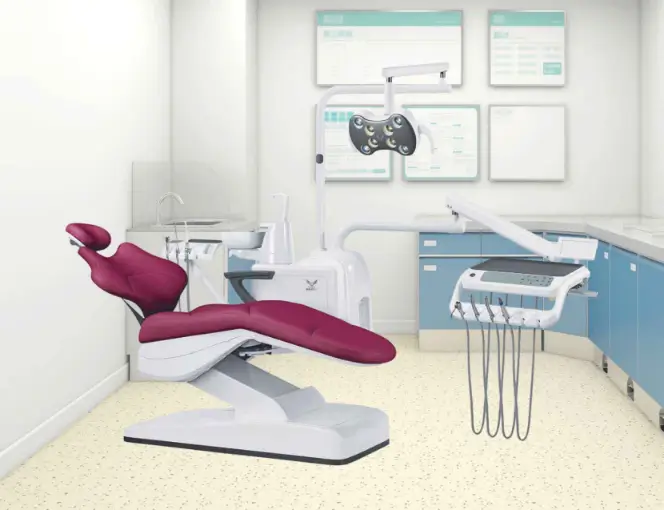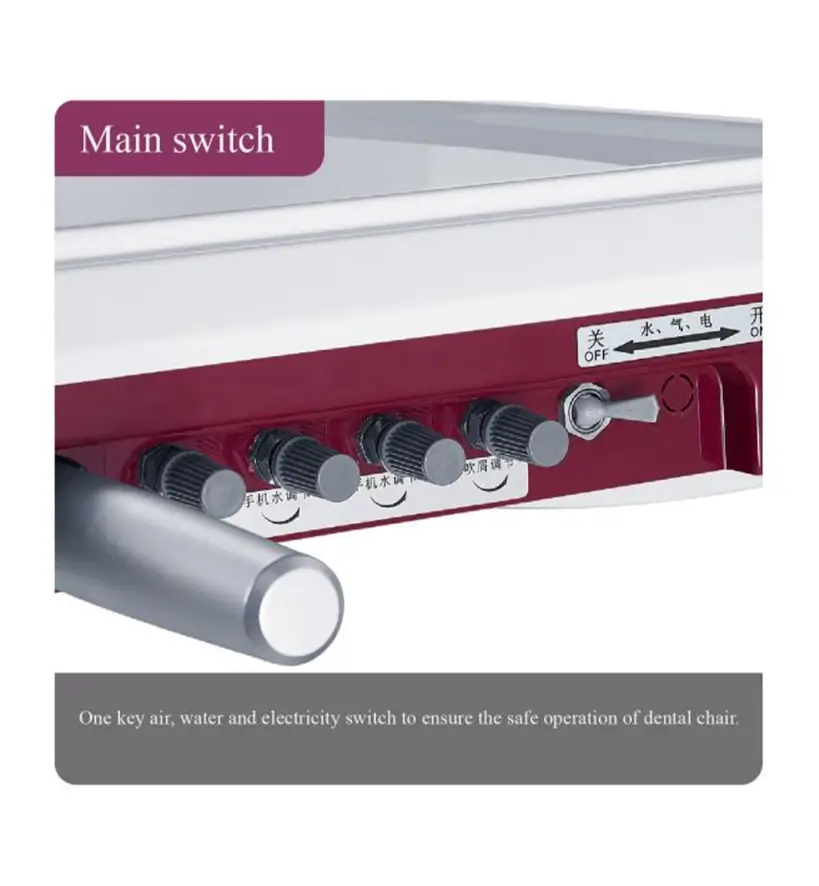
In every dental clinic, the chair is more than just a seat. It is where patients spend most of their time. It also sets the tone for how they feel about the visit. In small clinics, the integral dental unit is even more important. It combines the chair, the lamp, suction, and handpiece delivery into one system.
Patient comfort is always the first concern. Many people feel stress or worry during dental visits. A soft chair that moves quietly can help calm them. Small practices often work with less space, so the chair must bring comfort without being too large.
The right unit makes daily work smoother. A chair that tilts easily, gives strong suction, and comes with steady lighting saves time each day. For a small practice, even small time savings mean more patients can be treated and staff can work with less pressure.
A small clinic has limited floor space. The treatment room still needs enough room for the dentist and assistant to move, even when the chair is flat. Choosing a compact unit with multi use functions helps make the best use of the room.
Small practices often need to think more about money. Buying a dental unit is a large investment. Owners look for the right balance between price and build quality. Entry models may cover the basics. Mid-range units may bring more comfort and better strength. The goal is to choose something that works now and still lasts for years.
Patients today notice details. They look at the seat cover, the lamp brightness, and even how loud the motor sounds. A well chosen unit helps small practices show a modern and professional image, even with fewer staff and resources.
Ergonomics is vital for both patients and doctors. Adjustable headrests, armrests, and smooth reclining positions reduce stress for the patient and the dentist. In small rooms, compact units must still allow correct posture without forcing awkward positions.
Modern units combine many systems: chair adjustment, suction, water supply, and delivery. For small practices, multi function designs save space and time. Layouts with foot controls or simple trays allow dentists to work smoothly even when help is limited.
Clean and safe units protect both staff and patients. Chairs with seamless covers, removable trays, and easy to rinse water lines reduce the chance of infection. Small clinics benefit because quick cleaning between patients is easier and safer.

Before setup, clinics need to check the floor, electric outlets, and water pipes. Most dental units need stable power and working plumbing. Even small units, like those made by Gladent, need careful planning so they can run well.
If the chair squeaks, shakes, or has worn padding, it may need repair. Preventive service every 6–12 months helps keep the unit strong. In a small clinic, where one chair often serves all patients, avoiding breakdowns is especially important.
A unit is only useful if the team knows how to use it. Assistants should learn how to handle suction, adjust lights, and move the chair. Clinics that train their team usually work faster and make patients feel more at ease.
Gladent makes several models for small practices. The GD-200 is simple and budget friendly. It offers comfortable seating, basic controls, and steady function. The GD-300 gives more features, such as better design choices and stronger ergonomics. It also has colorful options that appeal to both adults and children.
For small clinics that want more flexibility, mid-level models like the GD-350 can be a smart step. They include stronger lighting and flexible trays, making it easier to treat different types of patients.
When buying a dental unit, after sales support matters too. Clinics that get to know them will see that Gladent offers guidance and service after purchase. This gives clinics more value and security for the long term.
The dental field is changing fast. Portable units, advanced ergonomic chairs, and digital systems are now common. A clinic that invests in digital ready equipment will find it easier to adopt new tools when needed.
A dental unit is more than a seat. It is a tool that affects every patient and every treatment. By balancing cost, durability, and patient comfort, small practices can build a strong base for future growth. Clinics looking for advice or options can contact them for help in choosing the right model.
Q1: What makes an integral dental unit good for small practices?
A: A small unit with ergonomic design, multi function tools, and compact size makes the best use of limited space.
Q2: Are lower cost models strong enough for daily use?
A: Yes. Units like GD-200 give reliable service every day and are built with long term use in mind.
Q3: Which Gladent models work best in small clinics?
A: The GD-200 and GD-300 are both strong choices for space saving, comfort, and simple control.
Q4: How much space should be planned for setup?
A: Around 6–8 square meters is usually enough for the chair to recline fully and for staff to move around it.
Q5: How often should dental units be checked?
A: Preventive checks every 6–12 months are best, along with daily cleaning and flushing of the water system.